Finding the ideal display for your setup often comes down to balancing performance, size, and value. For many, 24-inch monitors strike the perfect chord, offering a compact footprint without compromising on essential features. These versatile displays are celebrated for their ability to fit comfortably on most desks while delivering sharp visuals and responsive performance for a variety of tasks, from competitive gaming to daily productivity and creative endeavors.
This comprehensive guide is designed to cut through the complexity of monitor specifications, helping you understand what truly matters when evaluating 24-inch monitors. We'll explore the key factors that influence performance and user experience, along with differentiating features that can elevate your setup. By focusing on objective insights and practical considerations, you'll gain the confidence to select a monitor that perfectly aligns with your needs and budget, ensuring a smart and satisfying purchase.
Essential Monitor Specifications
When choosing a 24-inch monitor, several core specifications directly impact your visual experience and overall satisfaction. Understanding these factors is crucial for making an informed decision, whether you're a gamer, a creative professional, or simply seeking a reliable display for everyday tasks.
Resolution

Resolution defines the number of pixels on your screen, directly influencing image sharpness and detail. For 24-inch monitors, the most common and often ideal resolution is Full HD (1920x1080). This provides excellent sharpness and crisp text without overtaxing your computer's graphics card, making it a sweet spot for general use, productivity, and competitive gaming.
Full HD (1920x1080): Offers good sharpness and is less demanding on your PC, allowing resources to be allocated to higher refresh rates or better panel quality. On a 24-inch screen, 1080p results in a comfortable pixel density for clear images and text.
QHD (2560x1440): Provides more detail and screen real estate, beneficial for designers, gamers seeking clearer visuals, and multitaskers. While less common on 24-inch displays, it offers a noticeable upgrade over 1080p.
4K UHD (3840x2160): Delivers unparalleled sharpness and detail, ideal for creative professionals. However, on a 24-inch screen, 4K may require operating system scaling to make text and icons comfortably viewable, and it demands significantly more processing power from your graphics card.
The tradeoff with higher resolutions is the increased demand on your graphics card. For competitive gaming, prioritizing a higher refresh rate at 1080p on a 24-inch monitor often provides a better experience than a higher resolution with lower frame rates.
Refresh Rate and Response Time
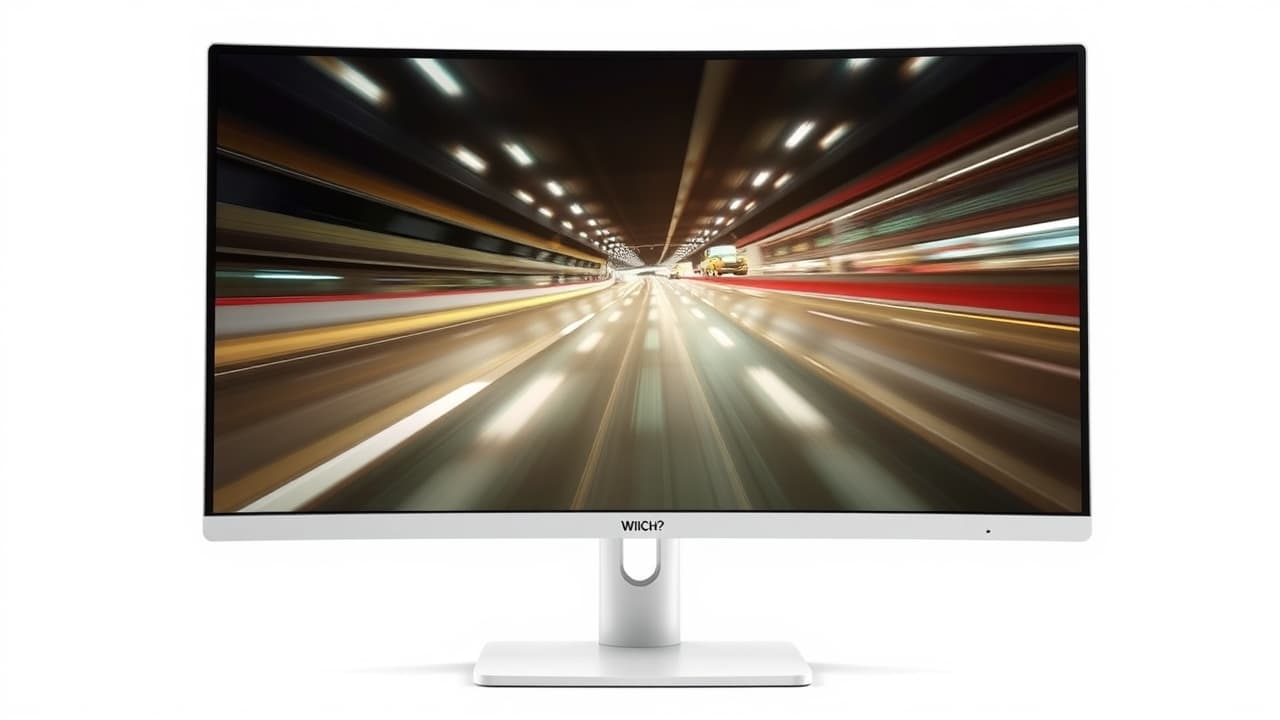
These two factors are paramount for motion clarity, especially for gamers and those who consume fast-paced media. The refresh rate (measured in Hertz, Hz) indicates how many times the screen updates per second, while response time (measured in milliseconds, ms) signifies how quickly pixels change color.
Refresh Rate: Standard monitors typically offer 60Hz, which is sufficient for productivity. However, for smoother motion, reduced blur, and lower input lag, higher refresh rates like 120Hz, 144Hz, 240Hz, or even 360Hz and 600Hz are ideal. Competitive gamers benefit most from ultra-high refresh rates, gaining a significant edge in fast-paced titles. A 100Hz refresh rate provides a noticeable boost over 60Hz for general smoothness.
Response Time: A low response time is crucial to minimize motion blur and ghosting. For fast-action games, 1ms (GtG or MPRT) is considered ideal, ensuring quick reactions and clear visuals. Some high-end gaming monitors even achieve 0.5ms. Slower response times, such as 8ms, can lead to noticeable smearing in dynamic content.
Keep in mind that higher refresh rates demand more powerful graphics cards. For 24-inch monitors, the smaller screen size often allows for even quicker response times, contributing to a more immediate and fluid gaming experience.
Panel Technology
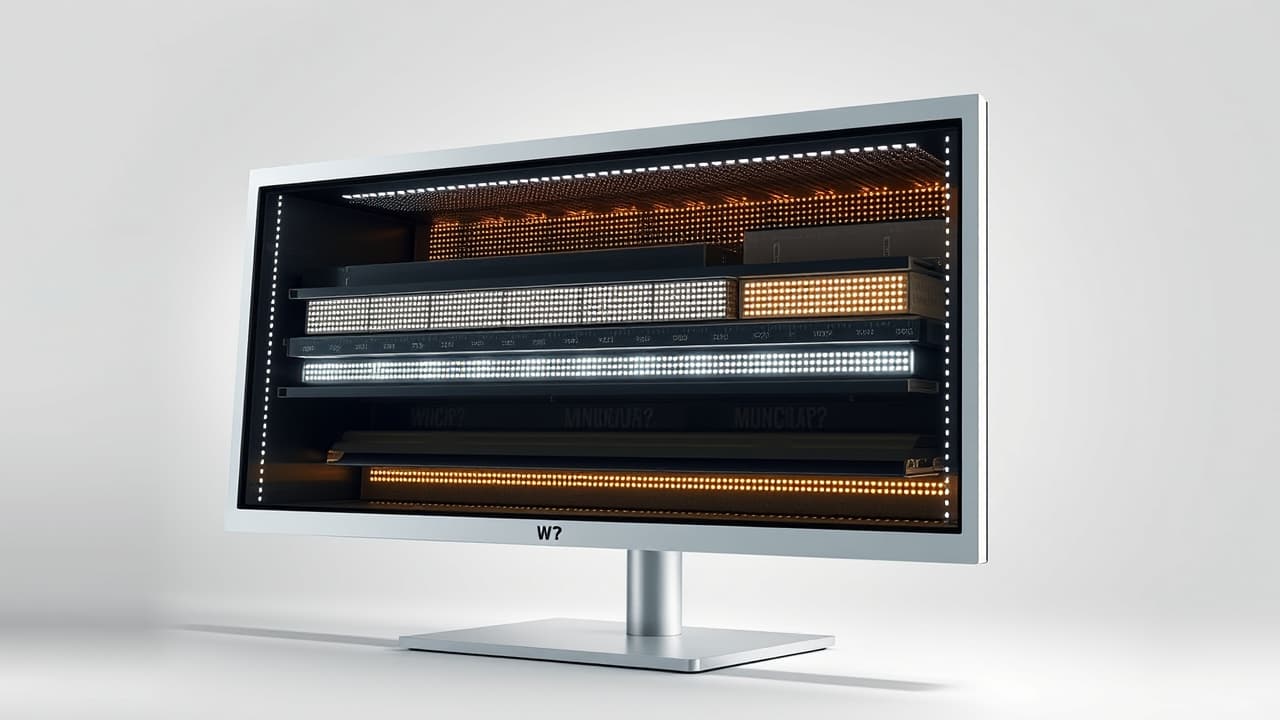
The panel type is the core display technology that dictates color accuracy, viewing angles, and response times. Each type offers distinct advantages and disadvantages, making your choice dependent on your primary use case.
IPS (In-Plane Switching): Known for superior color accuracy and wide 178° viewing angles, IPS panels are ideal for creative work, general use, and collaborative environments where consistent colors are essential. Modern IPS panels have significantly improved response times, making them suitable for most gamers.
VA (Vertical Alignment): These panels excel at delivering high contrast ratios (e.g., 3,000:1) and deeper black levels compared to IPS, enhancing immersion for movies and games. However, they can sometimes suffer from slower pixel response times, potentially leading to smearing in fast-paced content.
TN (Twisted Nematic): TN panels offer the fastest pixel response times, making them a top choice for competitive gamers who prioritize speed above all else. The trade-off is inferior color reproduction and narrow viewing angles, which can make them less suitable for general or creative use.
OLED (Organic Light-Emitting Diode): While expensive and less common in 24-inch monitors, OLED offers unparalleled contrast, true blacks, and superior color performance due to self-emissive pixels. They also provide best-in-class motion clarity.
Your ideal panel type depends on your priorities: IPS for balanced visuals, VA for contrast, TN for pure speed, and OLED for ultimate image quality if budget allows.
Ergonomics
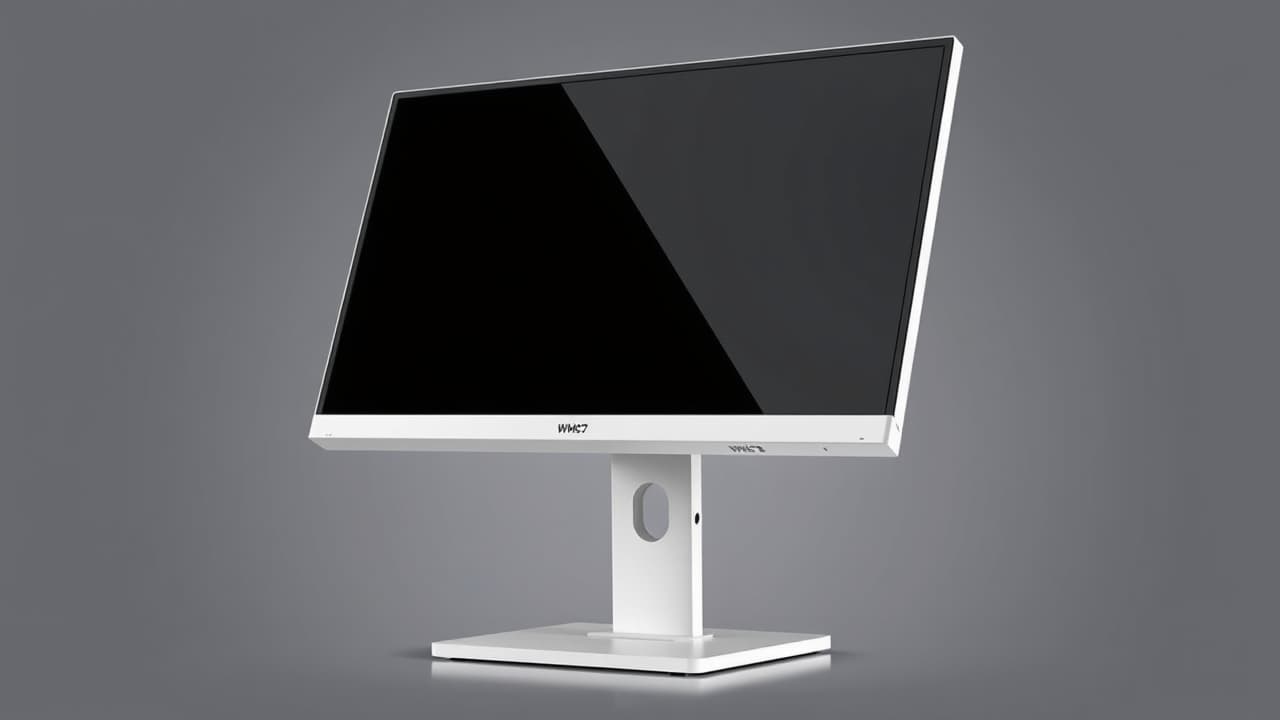
The adjustability of your monitor stand is crucial for long-term comfort and productivity. A well-designed ergonomic stand allows you to customize your viewing experience, reducing strain on your neck and eyes.
Full Adjustability: Look for monitors with height, tilt, swivel, and pivot adjustments. Height adjustment is vital for aligning the top of the screen with your eye level, while tilt helps reduce glare. Swivel allows you to easily share your screen, and pivot enables portrait mode, which is excellent for coding or document review.
VESA Mount Compatibility: Most 24-inch monitors support VESA mounting (e.g., 100x100mm). This allows you to use third-party monitor arms or wall mounts, providing even greater flexibility for positioning and freeing up valuable desk space. Even if a monitor has a basic stand, VESA compatibility offers an upgrade path.
Cheaper models often come with tilt-only stands, which severely limit customization and can lead to uncomfortable viewing positions. Investing in good ergonomics is an investment in your long-term health and productivity.
Connectivity
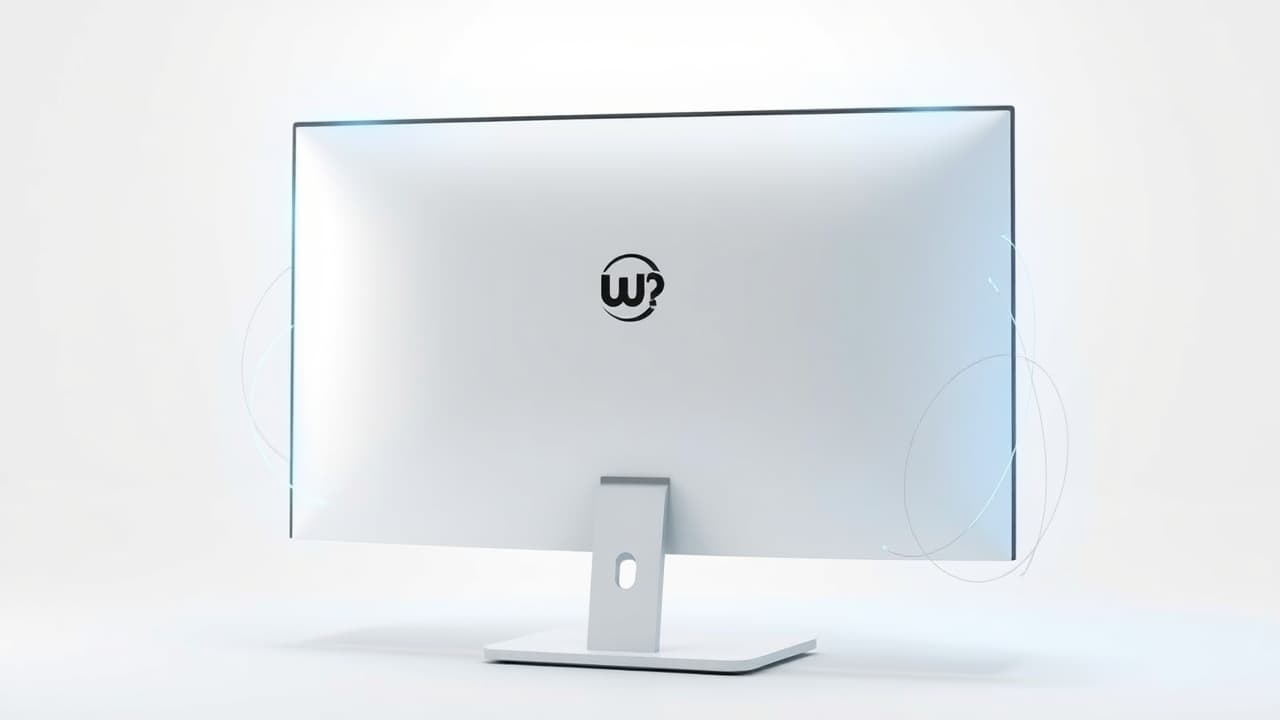
The types and number of ports available on your monitor determine its compatibility with your devices and peripherals. Versatile connectivity options simplify setup and can even reduce desk clutter.
HDMI and DisplayPort: These are the essential video inputs for modern monitors. DisplayPort offers superior bandwidth, ideal for high-performance gaming and professional design, often supporting daisy-chaining for multiple monitors. HDMI is widely compatible with various devices, including consoles.
USB-C: A highly versatile port that can transmit video, audio, data, and even charge a laptop (with Power Delivery) via a single cable. This is a game-changer for laptop users, creating a clean, simplified workspace.
USB Hub: Many monitors include integrated USB-A ports, allowing you to connect peripherals like keyboards, mice, or webcams directly to the display, further reducing cable clutter on your desk.
Avoid monitors with only legacy connections like VGA, as they limit resolution and refresh rate capabilities, making them unsuitable for modern setups.
Price and Value

The cost of a monitor and its perceived worth relative to its features is always a significant factor. 24-inch monitors generally offer excellent price-to-performance ratio, making them a budget-friendly choice compared to larger models.
Budget-Friendly Options ($79 - $150): In this range, you can find 1080p monitors with decent refresh rates (e.g., 75Hz - 144Hz) and good panel quality (IPS), making them accessible for entry-level gamers or general users. This affordability allows you to invest in higher refresh rates or better panel quality without breaking the bank.
Mid-Range Monitors ($200 - $350): This segment offers a balance of advanced features, such as QHD resolution, USB-C connectivity with Power Delivery, and professional-grade color accuracy, making them suitable for more demanding users.
While premium models exceeding $500 exist, offering features like 4K resolution or advanced calibration, these can be a significant barrier for many, especially for a 24-inch screen. Consider your budget and prioritize features that offer the most value for your specific needs.
Enhancing Your Visual Experience
Beyond the core specifications, several features can significantly enhance your monitor's usability, comfort, and visual performance. These are often differentiating factors that can make a good monitor great, depending on your priorities.
Eye Care Technologies

For anyone spending extended hours in front of a screen, eye care features are increasingly important. These technologies are designed to reduce eye strain and fatigue, protecting your vision during long work or gaming sessions.
Flicker-Free Technology: This eliminates screen flickering, a common cause of eye strain and headaches, by regulating the backlight in a way that prevents rapid on-off cycles.
Blue Light Filters: Features like Low Blue Mode or Reader Mode reduce harmful blue light emissions, which can disrupt sleep patterns and cause eye fatigue. While some filters may give the screen a yellowish tint, the benefits for long-term eye health are significant.
Ambient Light Sensors: Some advanced monitors automatically adjust screen brightness and color temperature based on ambient room lighting, optimizing display performance and further protecting your vision.
Look for TÜV certified eye comfort, which indicates that the monitor meets specific standards for reducing visual fatigue.
Adaptive Sync Technology
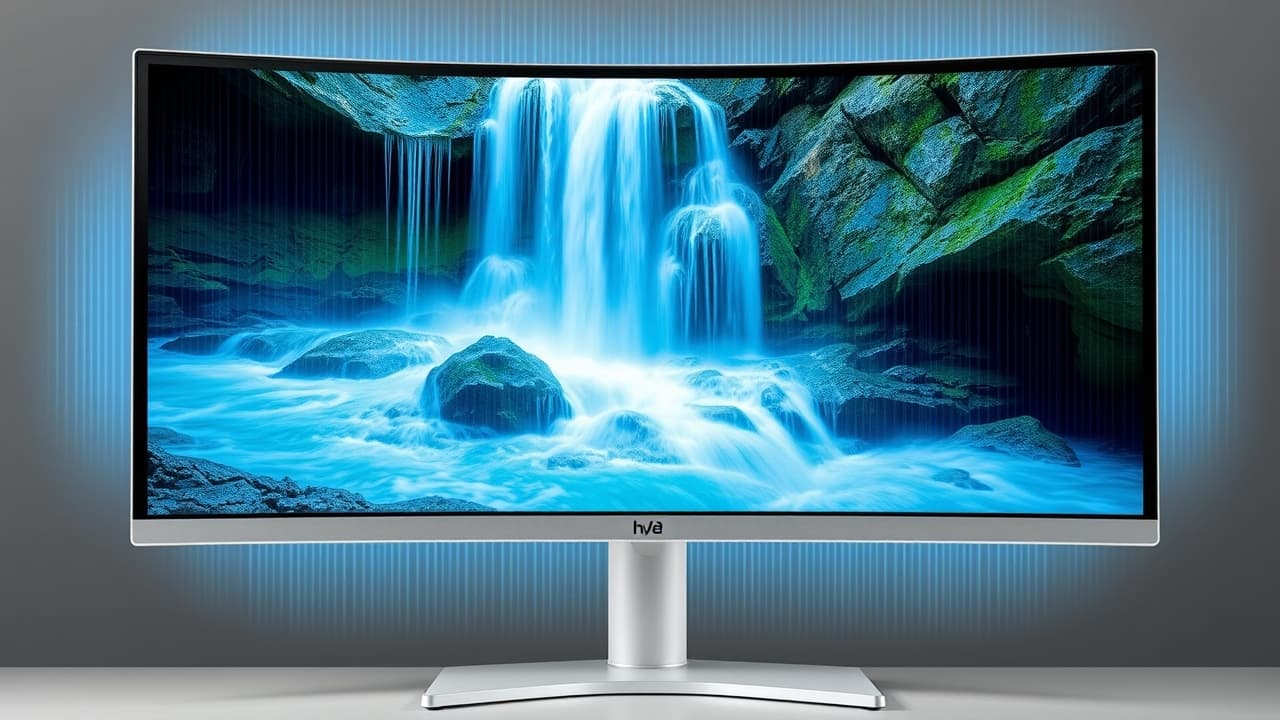
For PC gamers, Adaptive Sync is a must-have feature. Technologies like AMD FreeSync and NVIDIA G-Sync synchronize the monitor's refresh rate with your graphics card's frame rate, eliminating distracting screen tearing and stuttering.
Smoother Gameplay: Adaptive Sync ensures a fluid, tear-free gaming experience with minimal input lag, providing a competitive edge by maintaining consistent visuals.
Compatibility: AMD FreeSync is widely supported across many monitors and GPUs. NVIDIA G-Sync Compatible monitors are tested to work well with NVIDIA graphics cards, offering robust performance.
While Adaptive Sync is widely available, some monitors may have 'G-SYNC Unstable' compatibility, indicating less reliable performance. Also, note that Motion Blur Reduction often cannot be used simultaneously with Adaptive Sync, requiring a choice between blur reduction and tear-free gameplay.
USB-C Power Delivery

For laptop users, USB-C Power Delivery is a highly convenient feature. It allows a single USB-C cable to transmit video, audio, and data, while also charging your connected laptop, significantly reducing cable clutter and simplifying your workspace.
Single-Cable Solution: A monitor with USB-C PD transforms your setup into a clean docking station. Connect your laptop with one cable for display, data transfer, and charging.
Wattage Considerations: Look for monitors offering 65W or higher (up to 90W-96W) to adequately charge most thin-and-light laptops, 2-in-1s, or tablets. Lower wattage may charge slower or cause battery discharge under heavy use, especially for gaming laptops.
Monitors with USB-C Power Delivery are often slightly more expensive, but the added convenience and reduced cable management can be well worth the investment for a streamlined setup.
HDR Support
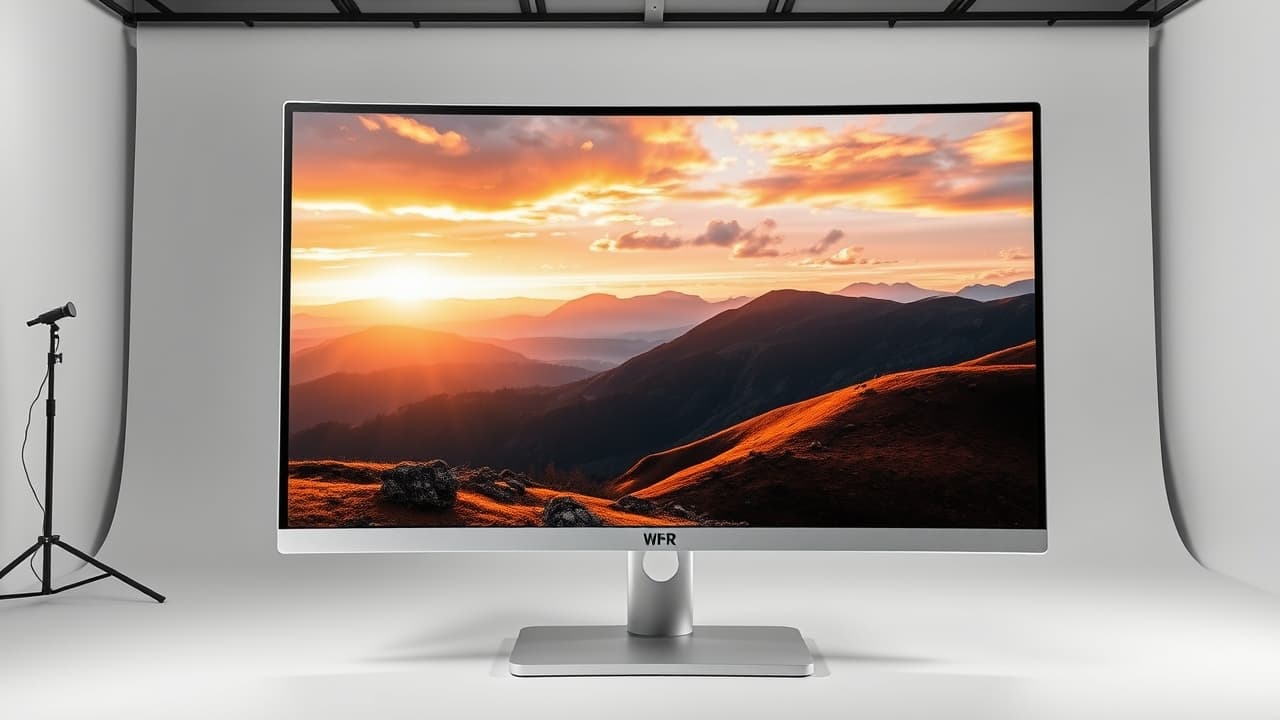
High Dynamic Range (HDR) support allows a monitor to display brighter highlights, deeper shadows, and a wider range of colors, resulting in more realistic and immersive images. This is particularly beneficial for consuming media and playing games.
True HDR Experience: For a truly impactful HDR experience, a monitor needs sufficient peak brightness (at least 600 nits, ideally 1000 nits) and local dimming zones. Look for VESA DisplayHDR certifications like DisplayHDR 400 (basic) or DisplayHDR 1000 (excellent) to ensure genuine HDR capabilities.
Color and Contrast: HDR also relies on a wide color gamut to produce vibrant, true-to-life colors and a high contrast ratio for image depth. Without these, HDR content may not show significant improvement over standard dynamic range (SDR).
Be cautious of monitors that claim HDR support but lack the necessary brightness or local dimming; these often offer a poor HDR experience. Achieving great HDR performance typically involves more expensive panel technologies like OLED or Mini-LED.
How to Choose the Best 24-inch Monitor for Your Needs
Selecting the ideal 24-inch monitor involves understanding your primary use case and prioritizing features that deliver the most value. These versatile 24-inch monitors offer a compact footprint, providing sharp visuals and responsive performance for gaming, productivity, and creative tasks.
This guide helps you navigate essential specifications and differentiating features. By identifying your usage category, you can confidently choose a 24-inch monitor that aligns with your needs and budget for a satisfying purchase.
Competitive Gaming Monitors
For serious gamers prioritizing speed and a competitive edge, a specialized 24-inch monitor is essential. These displays are engineered for rapid movements, delivering smooth visuals to minimize input lag and maximize reaction times.
Achieving peak performance requires specific technical specifications that directly impact motion clarity and responsiveness.
Refresh Rate: 180Hz+ for fluid motion.
Response Time: 1ms GtG or lower.
Panel Type: Fast IPS or TN for speed.
Adaptive Sync: AMD FreeSync/NVIDIA G-SYNC Compatible.
Recommended Options
ASUS TUF Gaming VG259QM
The ASUS TUF Gaming VG259QM is a top choice for competitive gamers. Its 280Hz refresh rate and 1ms response time deliver exceptionally smooth and clear visuals, providing a significant advantage in fast-paced games on a 24-inch monitor.
Resolution: Full HD (1920 x 1080)
Refresh Rate: 280Hz (Overclocked)
Response Time: 1ms (GTG)
Panel Type: Fast IPS
AOC 24G4
The AOC 24G4 offers excellent gaming performance at an accessible price. This 24-inch monitor combines a fast 180Hz refresh rate and 1ms response time with Adaptive Sync for a smooth, fluid experience.
Resolution: Full HD (1920 x 1080)
Refresh Rate: 180Hz
Response Time: 1ms GtG, 0.5ms MPRT
Panel Type: Fast IPS
Professional Productivity Monitors
Professionals, remote workers, and students who spend long hours in front of a screen need a highly functional and comfortable 24-inch monitor. Focus on ergonomics, versatile connectivity, and eye strain reduction.
These elements create an efficient, clutter-free workspace, promoting sustained productivity and long-term visual health.
Ergonomics: Full adjustability (height, tilt, swivel, pivot).
Connectivity: USB-C with Power Delivery (65W+), USB hub.
Eye Care: Flicker-free, Low Blue Light filters.
Panel Type: IPS for wide viewing angles, consistent colors.
Recommended Options
Dell P2425H
The Dell P2425H is an excellent 24-inch monitor for productivity, featuring robust USB-C connectivity with 90W Power Delivery and advanced eye care. Ideal for prolonged work sessions and a streamlined desk setup.
Resolution: Full HD (1920 x 1080)
Refresh Rate: 100 Hz
Connectivity: USB-C (90W PD), USB hub
Eye Care: ComfortView Plus
BenQ GW2486TC Eye-Care Monitor
Designed for eye comfort and productivity, the BenQ GW2486TC is ideal for users spending extensive hours in front of a 24-inch monitor. It offers comprehensive eye-care, versatile USB-C connectivity, and a fully adjustable stand.
Resolution: Full HD (1920 x 1080)
Refresh Rate: 100 Hz
Connectivity: USB-C (65W PD), USB hub
Eye Care: Flicker-free, Brightness Intelligence Gen2
Creative Content Creation Monitors
For photographers, graphic designers, and video editors, a 24-inch monitor for creative content demands exceptional color accuracy, high detail, and professional features. Precision in visual representation is paramount.
Prioritizing visual fidelity and consistency ensures creative work is rendered exactly as intended.
Resolution: QHD (2560x1440) or higher.
Color: Wide gamut (99% Adobe RGB/DCI-P3), 10-bit depth.
Panel Type: IPS Black for superior contrast.
Features: Factory calibration, shading hood.
Recommended Option
BenQ SW242Q
The BenQ SW242Q is purpose-built for creative professionals. This 24-inch monitor offers unparalleled color accuracy, high 2K resolution, and a wide color gamut, making it an indispensable asset for precise visual representation.
Resolution: 2560 x 1600 (2K), 16:10
Panel Type: Nano IPS Black
Color Gamut: 99% Adobe RGB, 99% DCI-P3
Connectivity: USB-C (90W PD), SD Card Reader
Balanced Performance Monitors
Users seeking a versatile 24-inch monitor that balances gaming and everyday tasks will find their ideal match here. These displays offer good value, handling fast-paced games smoothly while providing quality visuals for general use and media consumption.
The goal is a display that performs reliably across various activities without requiring significant financial investment.
Price: Good value.
Refresh Rate: 100Hz-180Hz for smoother motion.
Response Time: 1ms GtG or MPRT.
Panel Type: IPS for colors, VA for contrast.
Recommended Options
LG 24GS65F-B 24-inch Ultragear Full HD IPS Gaming Monitor
The LG 24GS65F-B Ultragear offers a compelling blend of gaming performance and image quality at an affordable price. This 24-inch monitor features a fast IPS panel, 180Hz refresh rate, and Adaptive Sync for smooth gaming and vibrant colors.
Resolution: Full HD (1920 x 1080)
Refresh Rate: 180Hz
Response Time: 1ms (GtG)
Panel Type: IPS
Samsung 24" Odyssey G3 (G30D) FHD Gaming Monitor
The Samsung Odyssey G3 (G30D) delivers exceptional value for gamers and general users. This 24-inch monitor combines a 180Hz refresh rate, 1ms response time, and a VA panel for immersive visuals with deep blacks.
Resolution: Full HD (1920 x 1080)
Refresh Rate: 180Hz
Response Time: 1ms MPRT
Panel Type: VA (3000:1 Contrast)
Premium All-Purpose Monitors
For those seeking a high-quality, versatile 24-inch monitor that excels across productivity, media consumption, and casual gaming, with budget not being the primary constraint, this category is ideal.
These premium displays offer a comprehensive and refined user experience, adapting seamlessly to diverse demands with advanced features and excellent build quality.
Build Quality: Durable materials, sturdy stand.
Ergonomics: Full adjustability.
Connectivity: Extensive USB-C hub (90W+ PD), KVM, Ethernet.
Eye Care: Advanced features (ComfortView Plus, Ambient Light Sensor).
Recommended Option
Dell UltraSharp U2424HE Monitor
The Dell UltraSharp U2424HE is a premium 24-inch monitor designed for versatility and excellence. Its IPS Black panel delivers superb image quality, while the extensive USB-C hub with KVM and advanced eye care provide unparalleled productivity and media consumption.
Resolution: Full HD (1920 x 1080)
Refresh Rate: 120 Hz
Panel Type: IPS Black (2000:1 Contrast)
Connectivity: USB-C (90W PD), KVM, Ethernet





